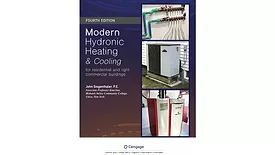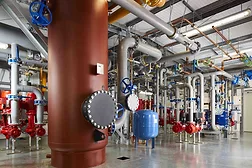Home » Keywords: » hydronic cooling
Items Tagged with 'hydronic cooling'
ARTICLES
Renewable Heating Design | John Siegenthaler
University's new sports complex benefits from hydronic heating and cooling system
Uponor PP-RCT offers a lightweight solution, promoting faster installation and jobsite safety.
June 19, 2024
New Products
Jaga Climate Systems announces Astra Beam active chilled beam system
June 6, 2024
John Siegenthaler: Well-planned hydronic systems last far longer than modern appliances
Lasting value
January 3, 2023
John Siegenthaler: Keeping your cool
Important details for small-scale chilled water cooling.
May 26, 2021
Radiant Comfort Report
Multiple variables affect the operating costs of an HVAC system
Control of variables and choice are key to manage a mechanical system for the life of a building.
May 13, 2021
Keep your content unclogged with our newsletters!
Stay in the know on the latest plumbing & piping industry trends.
JOIN TODAY!Copyright ©2025. All Rights Reserved BNP Media.
Design, CMS, Hosting & Web Development :: ePublishing











